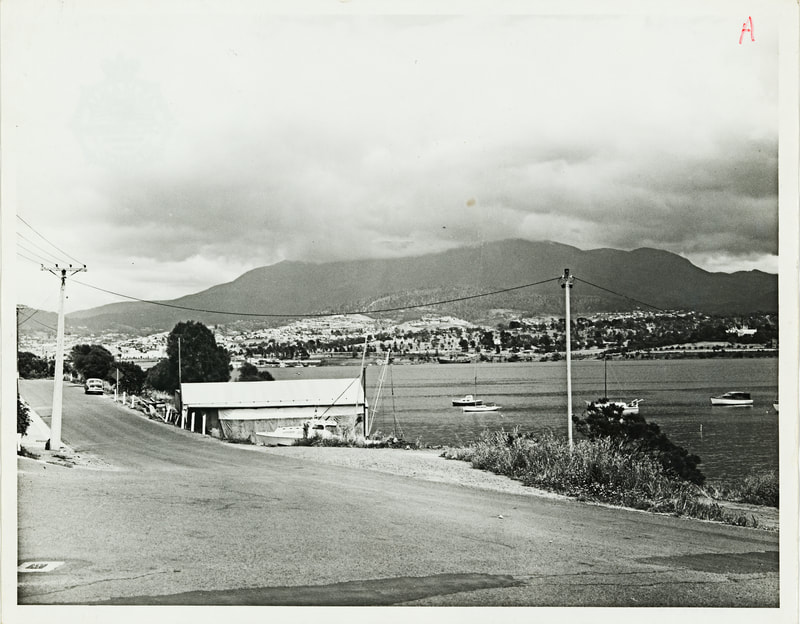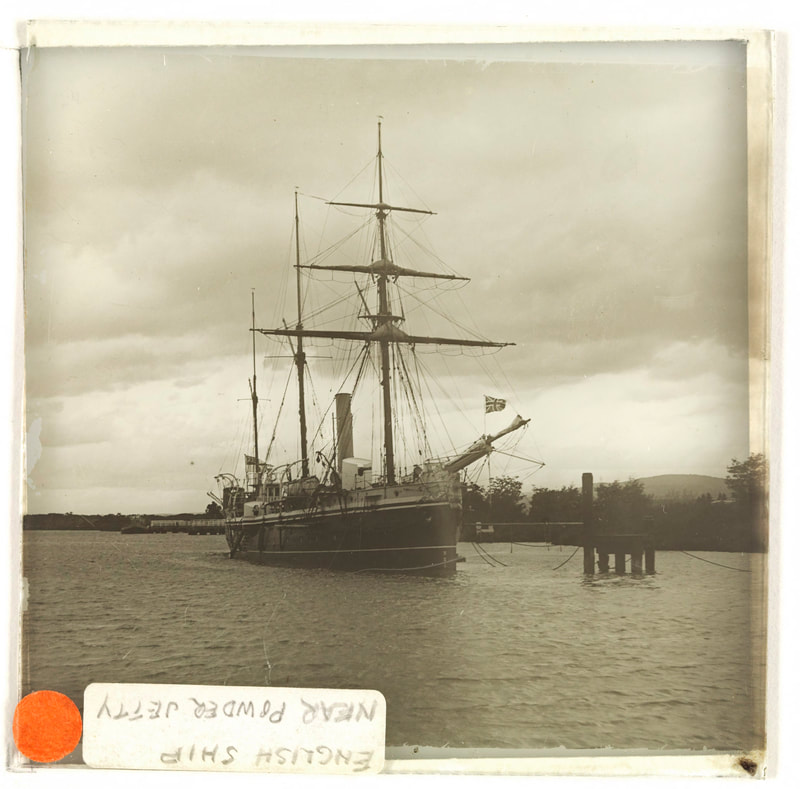Powder Magazine
1851: This powder magazine was built. This was the second powder magazine in Hobart. The first powder magazine was located opposite Government House. Plans were drawn up for this magazine in 1845. Convicts built the magazine using stone from a nearby quarry.
The powder magazine consists of three separate rooms.
The walls are 600mm thick made of sandstone bricks.
The interior walls are lined with timber and feature no nails or metal work that may result in a spark. Copper, brass and bronze is used in doors and fittings with massive copper conducting rods in case of lightning.
There are bent shaped vents in the walls, which are to prevent bushfire sparks from entering and no windows.
The original roof was a double roof with vaulted brick ceilings.
Potentially held about 2000 barrels of black powder.
Black powder was used by the military in small arms and cannons and in quarries.
The powder magazine is located where it is because:
It is a slight depression and away from nearby buildings in case of accidents.
Close to powder jetty for unloading gunpowder from England.
Close to the railway line for onward transportation.
Project Mohole (1961-1966) was the earth science complement of the space race. It was run by NASA. The aim was to obtain samples of soil from the between the earth’s crust and the earths mantel. Drilling occurred in the ocean because the mantle was much closer to the sea floor.
The powder magazine was used to store gunpowder needed for Project Mohole.
1970: The powder magazine ceases to store gunpowder.
Today: The gunpowder magazine is generally viewed from outside. To enter the gunpowder magazine you have to come on special occasions. Days such Anzac Day or the 7th June to commemorate the Boer War.
Photo: We acknowledge John Presser and Karl-Heinz Jakubec of Southern Tasmania Volunteer Artillery.
Powder Magazine Guard House
1851: The guard house was constructed concurrently with the powder magazine and at a sufficient distance from it not to be at risk. Down a curved avenue. With a good view of the powder magazine.
The guard house is a stone, brick and timber residence with a corrugated iron roof. The building was originally a small stone guard house the side wall of which can be seen on the south-west side. It has been extended and added to so many times little of the original building is obvious.
Front veranda sits on a stone base. Enclosed on the east and north.
Extension in the east.
Skillion added to rear.
Brick area of cottage sits on stone
Curved head brick window openings with timber windows.
Powder Jetty
1873: The powder jetty was constructed to replace an earlier jetty which was declared unsafe. The jetty was used to transport gunpowder between the powder magazine and ships. As the powder magazine became inadequate during Tasmania’s late nineteenth century mining boom designated gunpowder boats moored off the jetty stored excess explosives.
Today: It is a small sandstone jetty approximately seven meters long and two meters wide. It is built of sandstone and rubble. It is a rare surviving nineteenth century sandstone jetty.
1851: This powder magazine was built. This was the second powder magazine in Hobart. The first powder magazine was located opposite Government House. Plans were drawn up for this magazine in 1845. Convicts built the magazine using stone from a nearby quarry.
The powder magazine consists of three separate rooms.
The walls are 600mm thick made of sandstone bricks.
The interior walls are lined with timber and feature no nails or metal work that may result in a spark. Copper, brass and bronze is used in doors and fittings with massive copper conducting rods in case of lightning.
There are bent shaped vents in the walls, which are to prevent bushfire sparks from entering and no windows.
The original roof was a double roof with vaulted brick ceilings.
Potentially held about 2000 barrels of black powder.
Black powder was used by the military in small arms and cannons and in quarries.
The powder magazine is located where it is because:
It is a slight depression and away from nearby buildings in case of accidents.
Close to powder jetty for unloading gunpowder from England.
Close to the railway line for onward transportation.
Project Mohole (1961-1966) was the earth science complement of the space race. It was run by NASA. The aim was to obtain samples of soil from the between the earth’s crust and the earths mantel. Drilling occurred in the ocean because the mantle was much closer to the sea floor.
The powder magazine was used to store gunpowder needed for Project Mohole.
1970: The powder magazine ceases to store gunpowder.
Today: The gunpowder magazine is generally viewed from outside. To enter the gunpowder magazine you have to come on special occasions. Days such Anzac Day or the 7th June to commemorate the Boer War.
Photo: We acknowledge John Presser and Karl-Heinz Jakubec of Southern Tasmania Volunteer Artillery.
Powder Magazine Guard House
1851: The guard house was constructed concurrently with the powder magazine and at a sufficient distance from it not to be at risk. Down a curved avenue. With a good view of the powder magazine.
The guard house is a stone, brick and timber residence with a corrugated iron roof. The building was originally a small stone guard house the side wall of which can be seen on the south-west side. It has been extended and added to so many times little of the original building is obvious.
Front veranda sits on a stone base. Enclosed on the east and north.
Extension in the east.
Skillion added to rear.
Brick area of cottage sits on stone
Curved head brick window openings with timber windows.
Powder Jetty
1873: The powder jetty was constructed to replace an earlier jetty which was declared unsafe. The jetty was used to transport gunpowder between the powder magazine and ships. As the powder magazine became inadequate during Tasmania’s late nineteenth century mining boom designated gunpowder boats moored off the jetty stored excess explosives.
Today: It is a small sandstone jetty approximately seven meters long and two meters wide. It is built of sandstone and rubble. It is a rare surviving nineteenth century sandstone jetty.

